How to Write a Business Requirements Document
Ensure that every project is aligned with your business goals.
Behind every project, there is a business need. Yet there is often a mismatch between what was needed and what was produced. Getting the business requirements right is what can decide the ultimate success and failure of a project. 38% of companies cite inaccurate requirements as the primary reason for failed projects.
To get the desired outcome, first, it's important to accurately define it – that's where business requirements documents (BRDs) come in. It's written to describe why a project is needed, whom it will benefit, and when it will take place.
Let's dive deeper into what business requirements are and how effective BRDs are written.
- What are business requirements?
- What is a business requirements document (BRD)?
- Business requirements document example
- Business requirements document template
- The benefits of writing a BRD
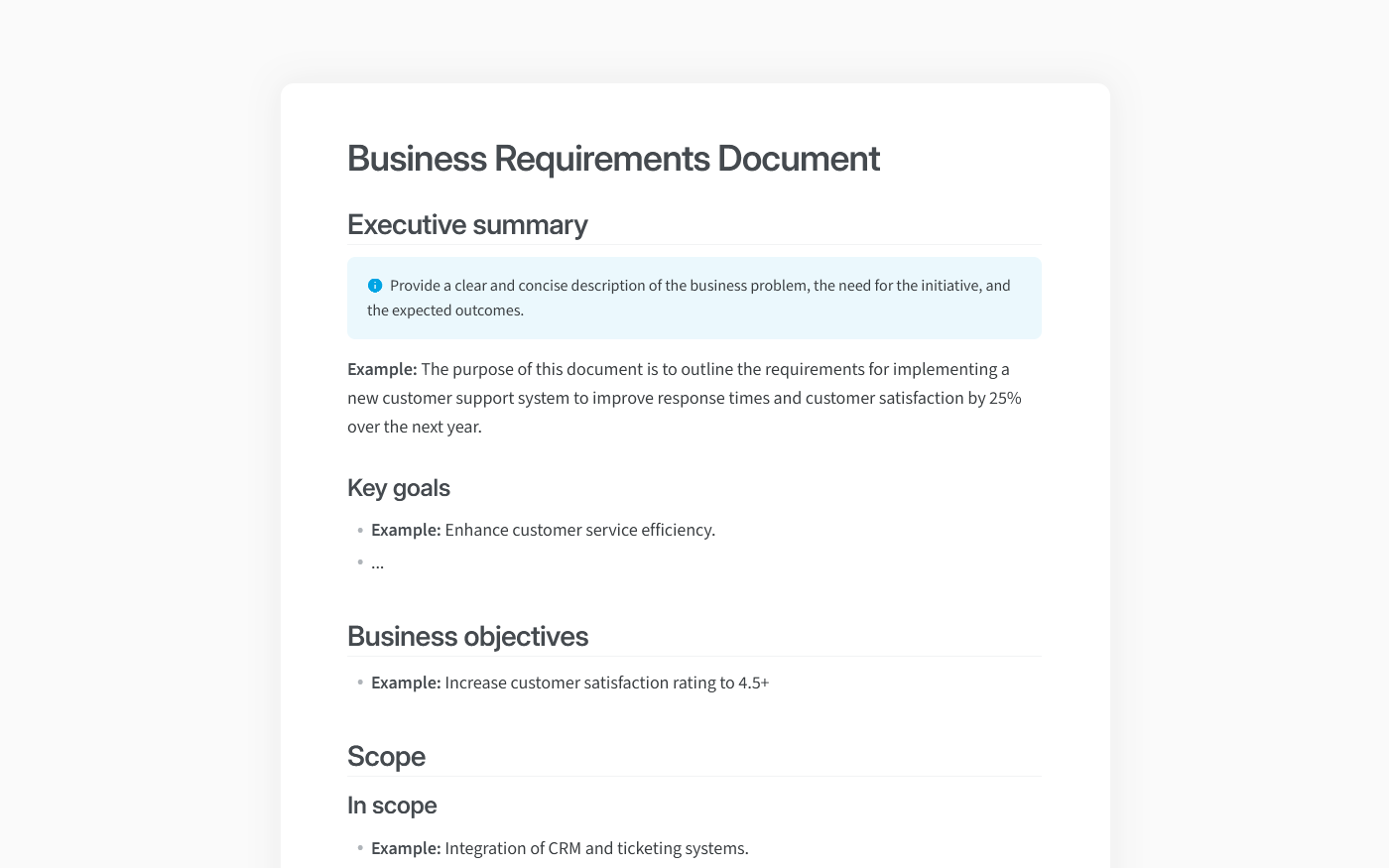
What are business requirements?
A business requirement is the rationale behind the initiation of a project. It describes the overall business goal of a project from the company’s point of view.
The project in question may involve a small-scale process optimization or the development of a brand-new product. Depending on its scope, the business requirements could be a simple description of business needs or a highly complex set of business objectives across multiple domains.
In any case, the business requirements need to be clearly defined for the project to be a success.
Types of requirements
Before getting into how business requirements should be written, it's important to understand where they fit in and how they differ from other types of requirements in product management. Although all requirements may share the same high-level goal, these terms should not be used interchangeably.
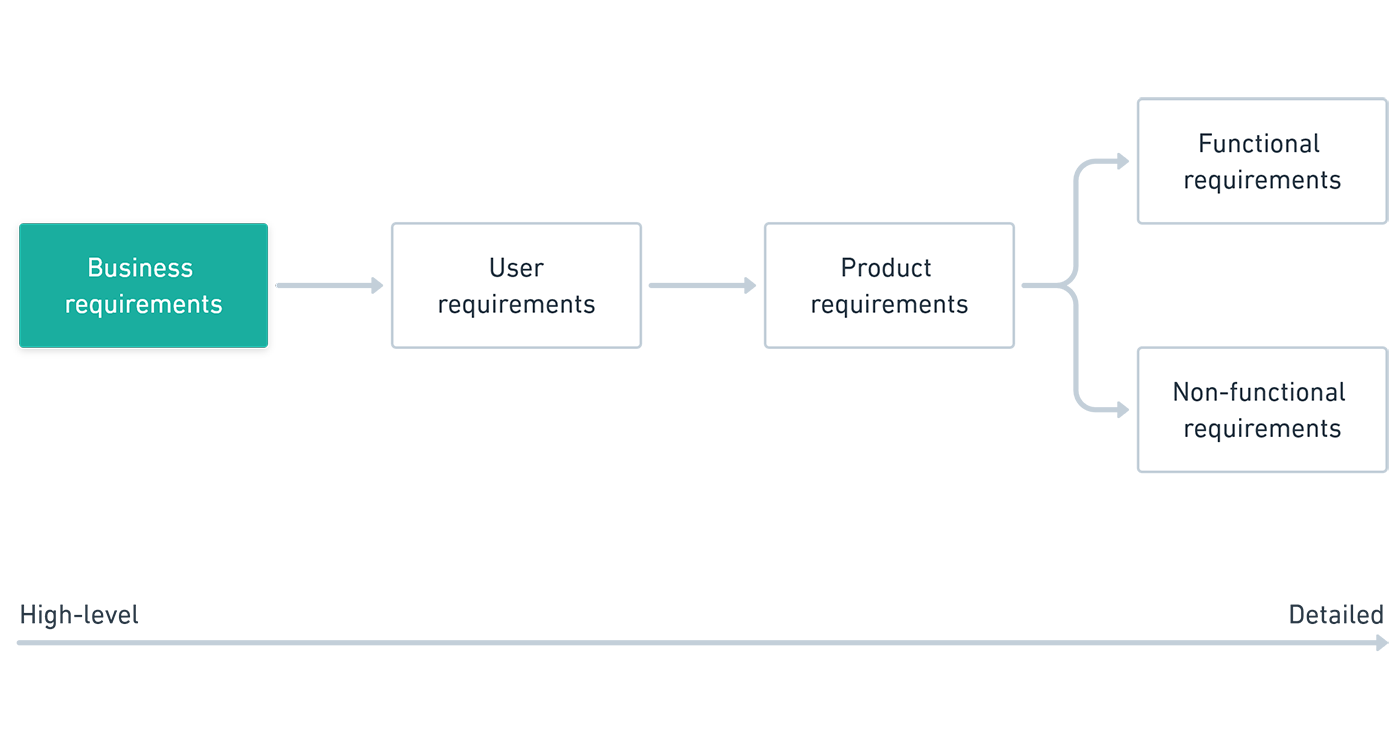
Business requirements describe the high-level business needs, without going into how the solution should be implemented. These may involve carving a market share, reducing customer churn, or improving the customers' lifetime value.
User requirements cover the different goals your users can achieve using the product and are based on the value it delivers to them. User requirements are commonly documented in the form of user stories, use cases, and scenarios.
Product requirements are derived from your business and user requirements and describe in detail how the system needs to operate to meet these requirements. They are documented in the form of product requirements documents (PRDs) and include:
Functional requirements – how the product solves the user's problem in terms of functionality.
Non-functional requirements – how well the product solves the user's problem in terms of performance, usability, security, etc.
As the project progresses, functional requirements crystallize into features. Every feature should be focused on satisfying the user's needs within the bounds of the business requirements and goals.
What is a business requirements document (BRD)?
To manage business requirements in an effective and organized way, business analysts and project managers write business requirements documents (BRDs).
A business requirements document (BRD) is a document that describes the problems the project is aiming to solve and outlines the outcomes necessary to deliver value. It doesn't need to include the implementation details of the solution.
On a high level, the BRD aims to answer the following questions:
What are the problems that the business wants to solve?
What are the constraints and restrictions?
Why is it worth to invest resources into this project?
Once you create the BRD, all project requirements should be referenced against it. Any requirement which doesn’t relate to the business objectives listed in the BRD should be either discarded or re-evaluated.
Business requirements document example
No two BRDs look the same – depending on the company, industry, and project scope, it can be either a very long and formal document, or a simple one-pager. With the growing popularity of the Agile approach to documentation, lightweight and compact requirements documents are becoming increasingly common.
Here's an example of a business requirements document created in Nuclino, a unified workspace where teams can bring all their knowledge, docs, and projects together in one place. Create an account and start writing your own BRDs:
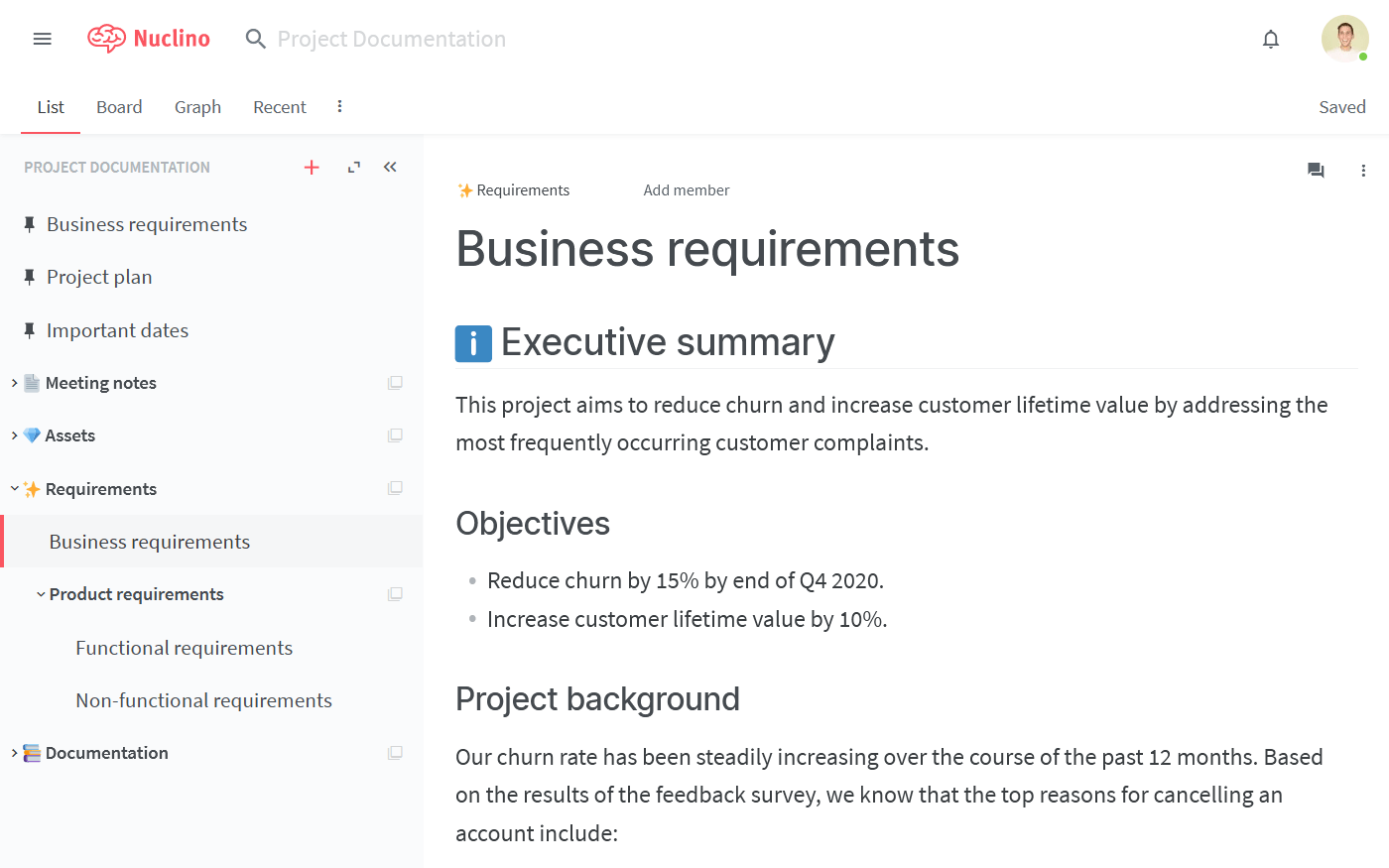
Business requirements document example
Nuclino can serve as a great internal documentation tool, though it's also versatile enough to be used to manage projects, plan sprints, onboard new employees, take meeting minutes, and more. It works like a collective brain, allowing you to collaborate without the chaos of files and folders, context switching, or silos.
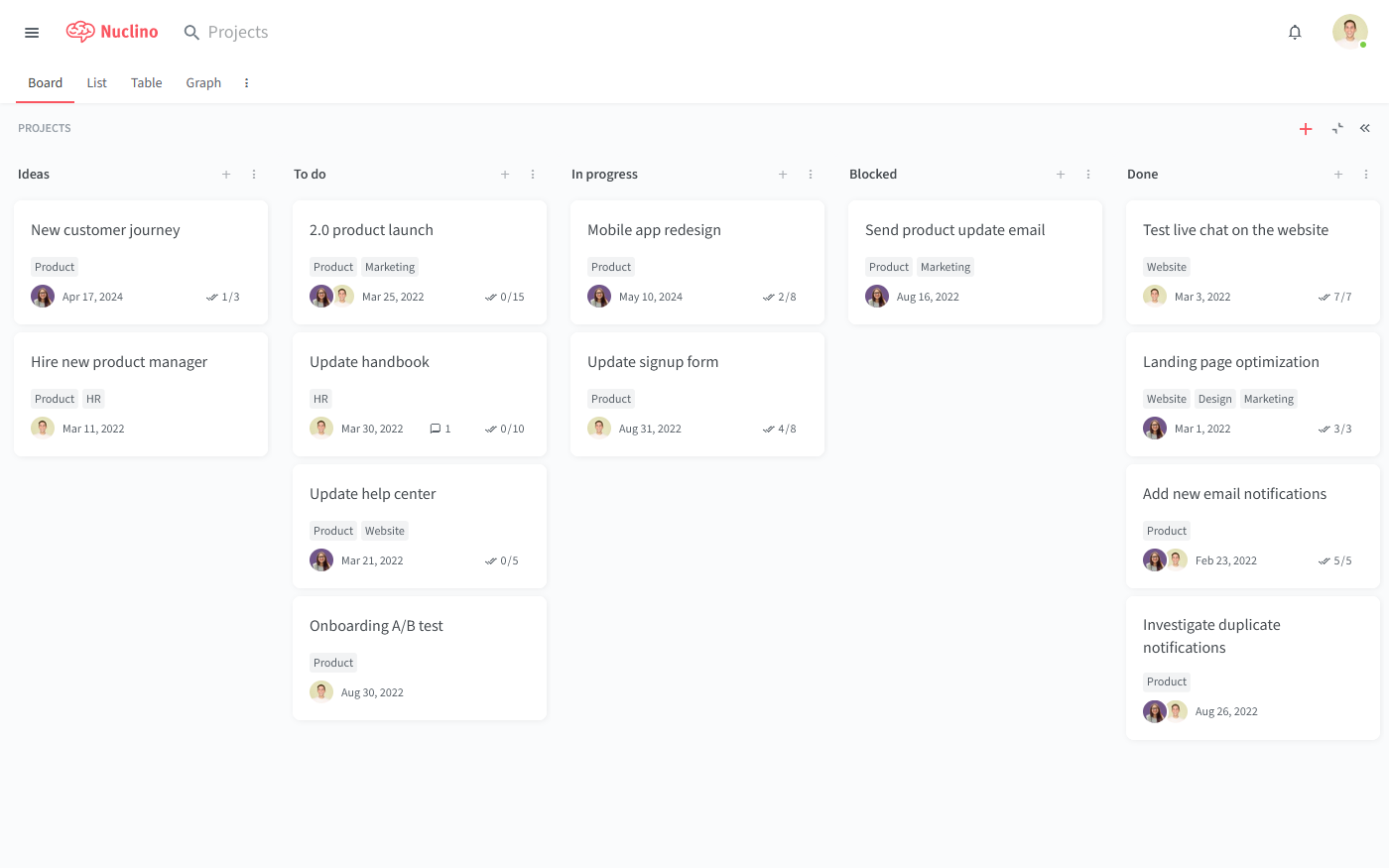
Business requirements document template
While there is no fixed structure that a BRD needs to follow, it generally includes the following sections and topics:
An executive summary
An overview of the business goals of the project
The context or background of the project
The scope of the solution
A list of project stakeholders
A detailed overview of the requirements
The metrics or indicators that will define the fulfillment of the business requirements
Constraints or limitations (time frame, budget, resources, etc.)
Here's one example of a compact business requirements document template:
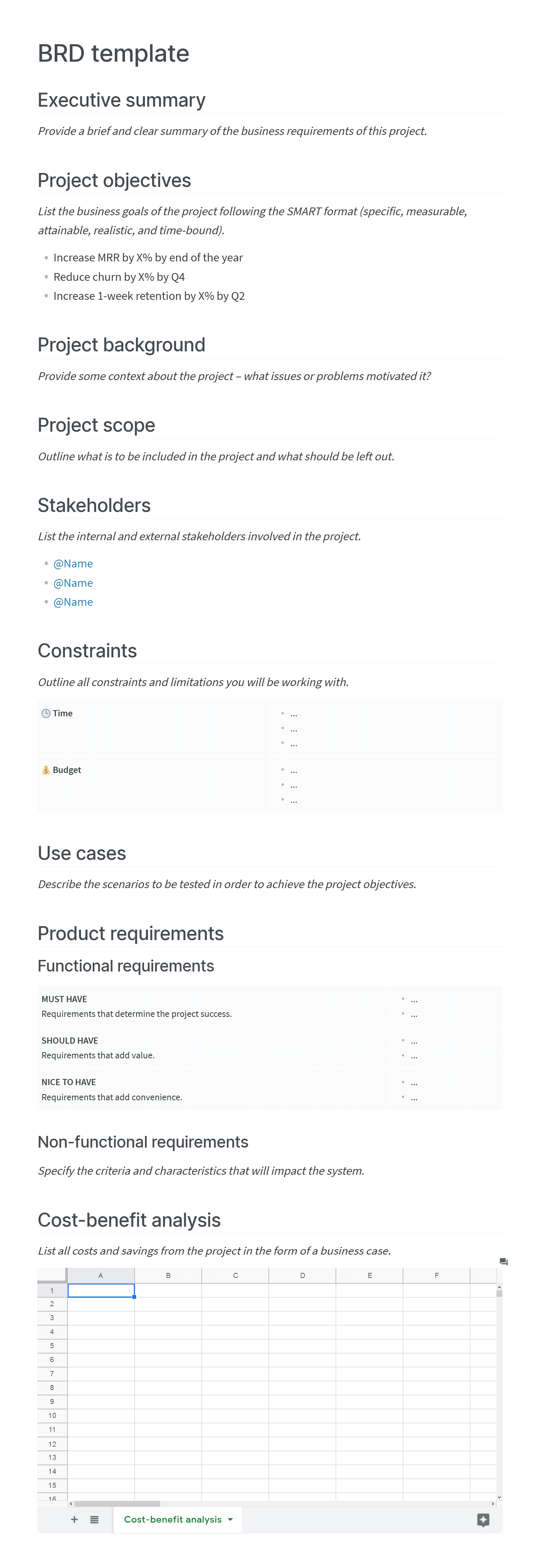
Business requirements document template
The benefits of writing a BRD
There are many reasons why writing a business requirements document is worth it:
It helps you connect every project to the broader business goals.
It gives all stakeholders a single source of truth and keeps them aligned.
It serves as a reference point for all communication between the business and development teams.
A business requirements document is one of the first documents created as part of your project plan. As the project progresses, the BRD continues to guide every decision with regard to prioritization, design, and scope, making sure that your project remains aligned with the overall goals of the business.
But at the end of the day, whether you write a formal BRD for every project is up to you and your team. As long as the business requirements are neatly documented somewhere (like your internal wiki) and all stakeholders remain on the same page, your project should stay on track.
Nuclino: Your team's collective brain
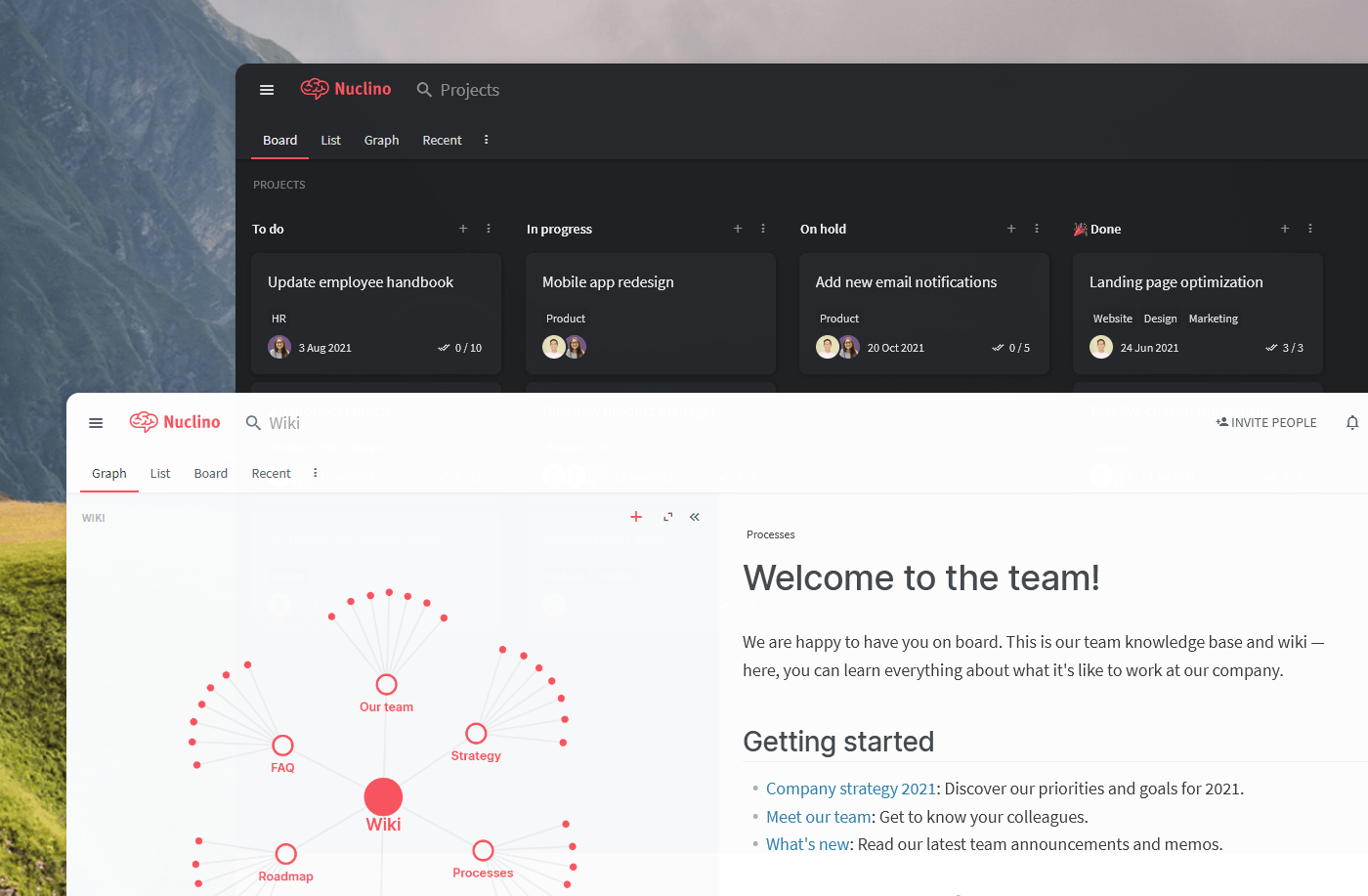
Nuclino brings all your team's knowledge, docs, and projects together in one place. It's a modern, simple, and blazingly fast way to collaborate, without the chaos of files and folders, context switching, or silos.
Create a central knowledge base and give your team a single source of truth.
Collaborate in real time or asynchronously and spend less time in meetings.
Manage and document your projects in one place without losing context.
Organize, sort, and filter all kinds of data with ease.
Integrate the tools you love, like Slack, Google Drive, Figma, Lucidchart, and more.
Ready to get started?
